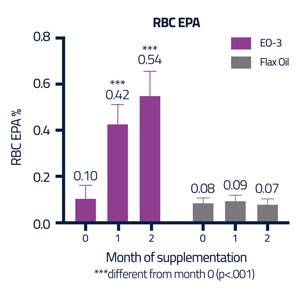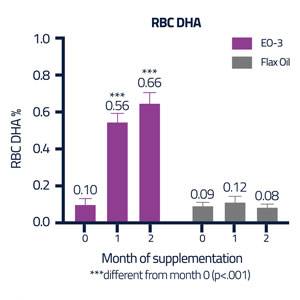Research Report: Choose EO-3 for Optimal Omega-3 Supplementation

The benefits of omega-3 supplementation in horses reach far and wide, influencing multiple body systems. Because horses cannot produce omega-3s, they must meet their requirement for these essential fatty acids through their diet. The most commonly used dietary sources of omega-3 fatty acids are marine-derived oils and flax-derived products, such as flaxseed and flax oil (called linseed in some parts of the world).
How best to supply omega-3s in the diet is a question Kentucky Equine Research recently investigated. The researchers measured changes in the fatty acid composition of red blood cells in exercising horses supplemented with flax oil or marine-derived oil in the form of EO-3™ for two months. Red blood cell membrane omega-3 fatty acid composition has been shown to be highly correlated with omega-3 fatty acid concentrations in body tissues. The primary omega-3 fatty acid contained in flax oil is alpha-linolenic (ALA), whereas EO-3 contains eicosapentaenoic acid (EPA) and docosahexaenoic acid (DHA), the two most potent anti-inflammatory omega-3 fatty acids.
The results of this study? EPA and DHA found in red blood cell membranes were significantly increased in the horses supplemented with EO-3, but not in those supplemented with flax oil, indicating horses do not appear to efficiently convert ALA into EPA and DHA.


Based on these findings, a direct dietary source of EPA and DHA like EO-3 is needed to affect long-chain omega-3 fatty acid content of red blood cell membranes.
Read more details on this study: Changes in Red Blood Cell Fatty Acid Composition in Exercised Thoroughbred Horses Supplemented with Either KER EO-3 or Flax Oil for a Two-Month Period.








